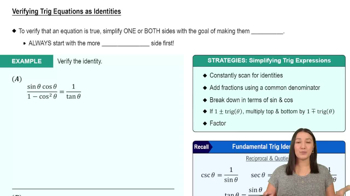7-56. Trigonometric substitutions Evaluate the following integrals using trigonometric substitution.
33. ∫ √(x² - 9)/x dx, x > 3
 Verified step by step guidance
Verified step by step guidance Verified video answer for a similar problem:
Verified video answer for a similar problem:



 5:04m
5:04mMaster Introduction to Indefinite Integrals with a bite sized video explanation from Patrick
Start learning